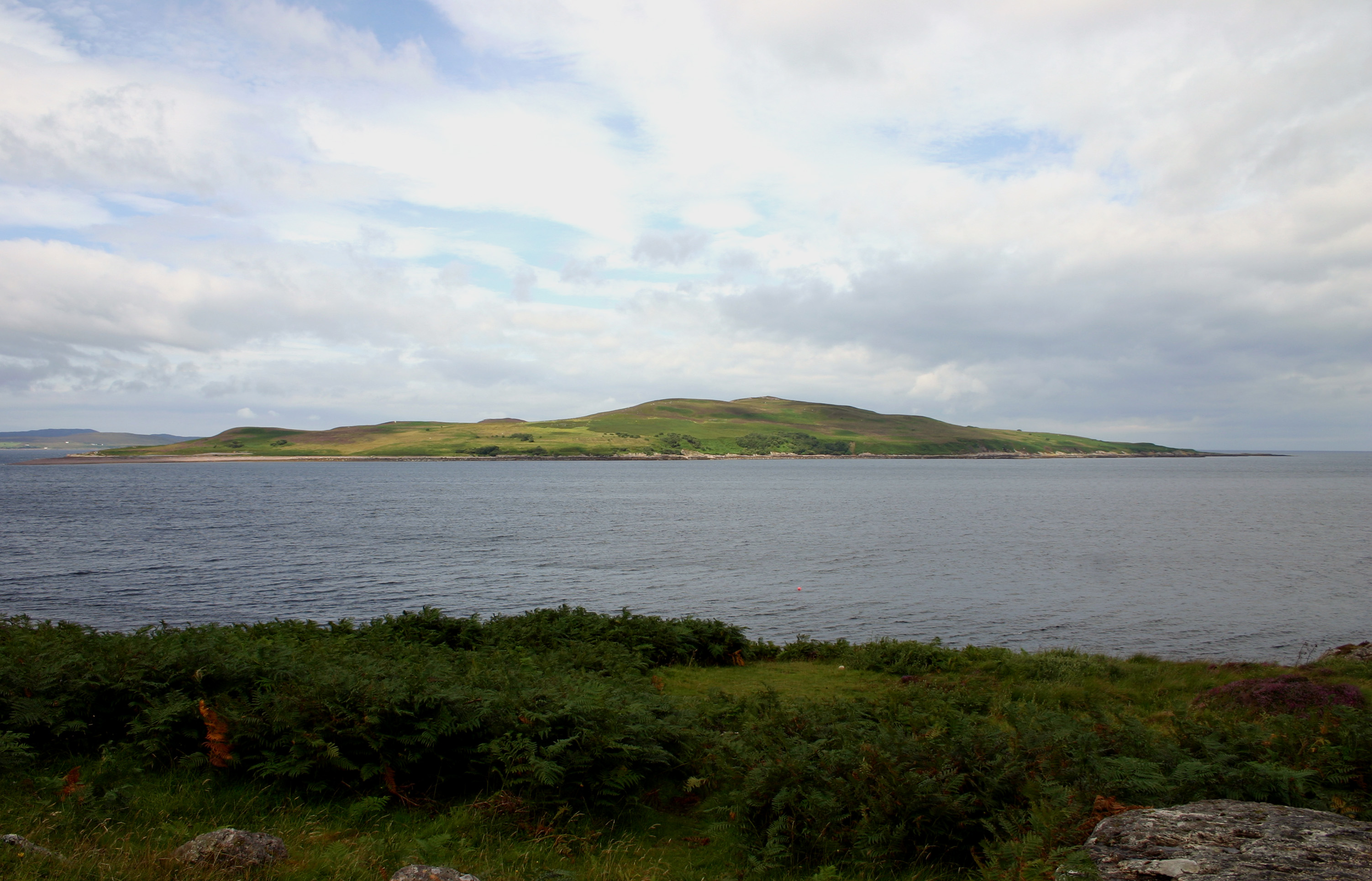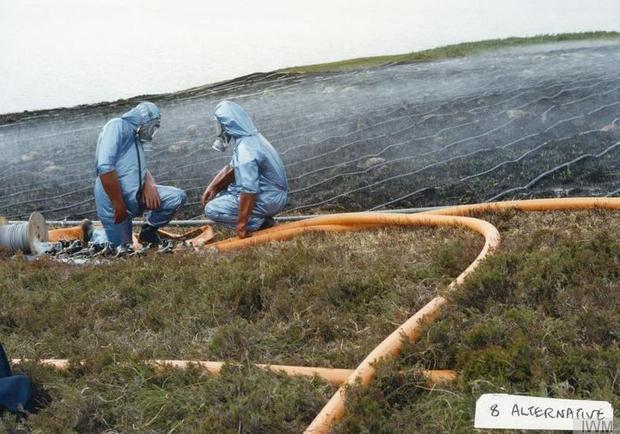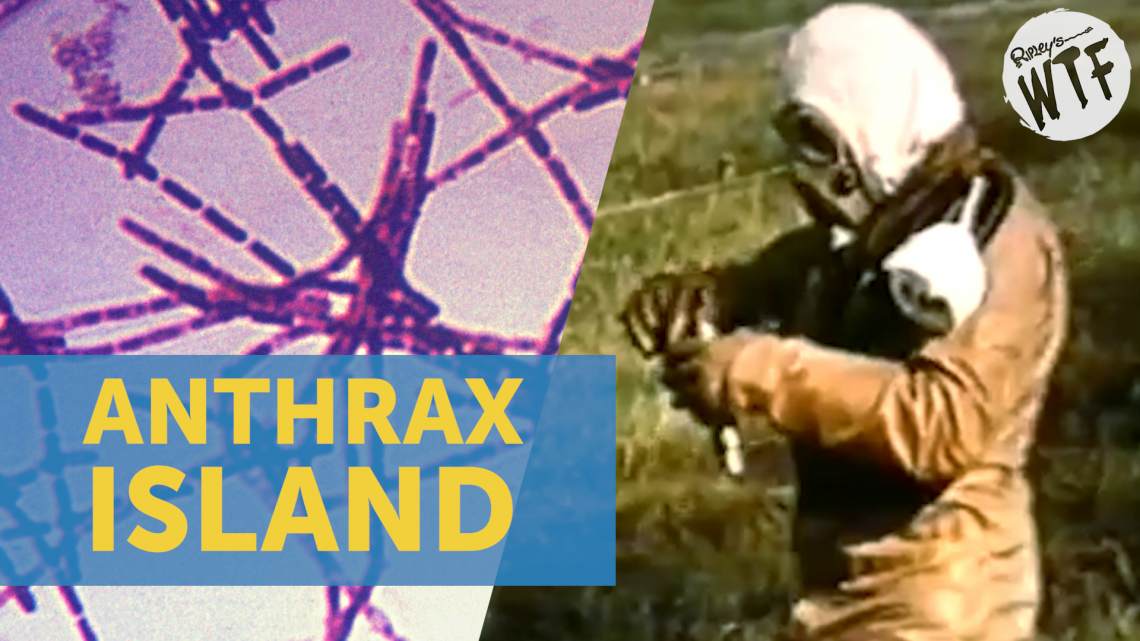Just half a mile off the coast of Scotland, in the Northwest reaches of the United Kingdom, lies an island that was once so contaminated with bioweapons that no one was allowed to step foot on it for fear of unleashing a miasma of anthrax upon the world.
Gruinard Island, as it is officially known, measures just 1.2 miles long. Once covered with trees, it was described as the perfect hideout for thieves and rebels in the 16th century. As many as six people were recorded living on the island, but since modern records starting in the 1920s, no one has lived there.

CC Kevin Walsh
It was in 1942, while the second World War raged, that military forces traveled to Guinard in hopes of creating a germ bomb to release on the Germans. Designated Operation Vegetarian, they hoped to disseminate deadly anthrax bacteria into the Nazi’s beef supply, crippling their enemies.
The strain they chose—Vollum 14578—becomes more virulent the more hosts are exposed, leading to a snowball effect of infection. Just like other forms of anthrax, it was communicable by eating the flesh of infected animals as well as being deadly to the animals themselves. This approach made the effort two-pronged. It would infect German citizens and also kill cattle, depriving their soldiers of food.
While gastrointestinal anthrax infection is the least common, its effects are just as deadly. Instead of causing boils and abscesses on the skin and throat, this type of infection results in bleeding throughout the digestive system. Even with treatment, mortality rates as high as 60% are projected.
Meteorologist Sir Oliver Graham Sutton traveled to the island with a team of 50 men and 80 sheep to complete to develop and test the plan. Though Operation Vegetarian parameters called for the dissemination of anthrax into the beef supply through linseed cakes, the scientists simply released a cloud of anthrax upon the tethered sheep. Within days the animals had all died. Though they carefully decontaminated their equipment and incinerated the sheep’s’ corpses, the team quickly realized their plan was too deadly.

Once the anthrax was unleashed, there was little they could do to stop it. Cities that suffered such a biological weapons attack would be rendered uninhabitable for decades. Though they managed to spare mainland Europe from such a disaster, it was too late for Guinard Island. The small landmass had to be quarantined.
Access to the island became strictly prohibited, and it was even removed from some map for fear that terrorist organizations would travel to the island to procure samples of the deadly bacteria.
The island remained off-limits and mostly forgotten until mysterious packages containing infected soil from the island showed up at government offices. The packages were labeled “Operation Dark Harvest” and demanded the government do something to clean up the island.

Via Imperial War Museum
In 1986, over 300 tons of formaldehyde were dumped on the island to try and kill the anthrax spores, and a flock of sheep was placed on the island to monitor for infection. After four years, the island was declared safe, and the quarantine lifted. The family who had been forced to give the land up to the government in the 1940s was also allowed to repurchase it for £500.
Despite its return to “safe” status, many remain fearful of Anthrax Island, fearing the biological weapons could have mutated, or remain hidden in microscopic slumber.










Battle of Britain was in 1940.
Updated. Thanks for the correction!
Wow so interesting ! I’m a medical student, in my microbiology book under anthrax topic just 1 line was given ‘anthrax spores could be used as biological weapons’ so I became curious & searched online to find this. It was such an interesting read, well worth my time
Wow ! I’m a medical student who came across this 1 line given in my microbiology book under anthrax topic which read ‘Anthrax spores are potential bio weapons’ so I got curious & searched online to find this. This was such an interesting read, totally worth my time 👌🏻